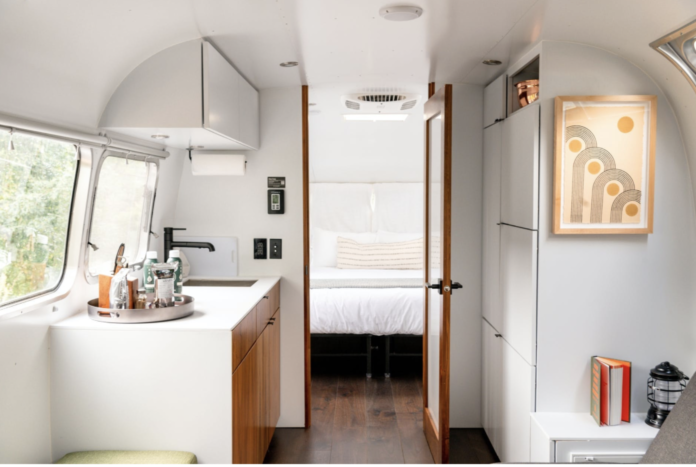By Katreena Sarmiento
Nowadays, people are increasingly adopting a minimalist style to get their lives in order. There’s a wide variety of content being published about its impact on our lifestyle and what changes can be made to lead a minimalist life.
Minimalism is a way of living with less. It is the process of removing excess stuff from one’s life to make it more manageable. When you have less, you become more thoughtful about what you need and want in life. This way of living means a reduction in waste and a low environmental impact. Additionally, if someone wants to live a sustainable lifestyle, minimalism may be the best way to do it
Minimalism is not just about owning less stuff – do not make the mistake of thinking it is. Instead, minimalism could be summarized as only owning things that add value to your life.
Minimalism is not about completely denying oneself, but rather eliminating items that don’t provide any real value and can unnecessarily clutter one’s life.
Here are ways you can live a more sustainable life by adopting the principles of minimalism.
Intentional buying
Minimalism is a philosophy that gets you thinking twice about your actions and possessions. Sustainability is about using only what you need and making sure nothing is wasted, which aligns with the minimalist approach. You can start today by buying less. An example would be buying natural skincare products or every time you go grocery shopping, having a grocery list can help you keep track of the things you only need so you don’t go overboard.
Eco-friendly options
While you’re on your way to minimalism, you might find yourself looking at clothes and asking yourself whether you need them. You can make the most out of your existing wardrobe by only choosing pieces you use often. If your current wardrobe doesn’t serve you, go eco-conscious: sell them or donate them. If you end up needing to replace your clothes, try to buy more sustainable items that will last long.
If you’re concerned about the environmental impact of clothing, you can check out organizations that sell sustainable clothes or minimize your carbon footprint by buying pre-owned clothes at a thrift store.
Healthier meals
Those who advocate a sustainable lifestyle might have to grow and harvest all their food, but those who practice minimalism will find eating easier. You can still go to your local grocery store as long as you choose all-natural products. You’ll be able to quickly learn ways to eat clean and making your typical grocery list will get easier with time.
By not buying products made or treated with chemicals (like pesticides), you’re helping the earth by causing less of those harsh products to be used. You can either buy organic or grow your natural products at home.
Less waste
Minimalism makes you conscious of the waste you produce. Buying less means less waste; the fewer purchases you make, the fewer items, boxes, and packing materials that end up dumped in landfills.
Being kind to the environment is easier than you think, and reducing your waste helps with this. Not only does less sorting mean less wastage of time & energy, but also more efficient recycling and composting. Decreasing the amount of waste we produce can make our planet more sustainable.
Find more joy
When it comes to minimalism, we think of Marie Kondo and ask ourselves: does it spark joy? If the answer is yes, then keep it in your life and keep reminding yourself of its importance. If not, no worries: thank it for all the time spent together and donate what you don’t need or want anymore.
When you simplify your life, you’ll be able to spend more time on the essential pieces of life: spending time with family or watching a movie with friends.
Mindful daily life
Minimalism doesn’t only concern itself with the number of things you own or what you eat. It’s also about what you practice in your daily life, such as how you clean up after yourself, how you interact with others, and how you manage your day-to-day activities.
When your schedule fills up too much, it becomes very important to learn how to say no. This will allow you more time for your well being – like getting enough sleep and spending time doing things that make you happy.
Sustainable living
People are shifting more of their focus onto living in a more minimalistic way, showing through their choice of architecture. One trend is living in tiny houses. People who live in tiny houses also feel happier with the switch, finding it better than living in large spaces. This is because the tiny house lifestyle has proven to have a smaller ecological footprint than traditional-sized homes – not just in space but in many other aspects too.
Perhaps the biggest impact tiny homes have is on energy use. This includes space heating, water heating, and lighting which contributes less to climate change and is more environmentally friendly than a full-sized home.
It’s been found that smaller houses encourage people to only buy what they need. This is because there isn’t enough space to store items for them.
Overall, this philosophy can save both your money and the environment. The idea behind it is to focus on things you need and spend less money and energy on other things, which in turn can support a sustainable lifestyle.
We encourage you to focus on practising minimalism and sustainability. This not only makes you live a meaningful life but helps the environment for generations to come.
Top Image: Source











